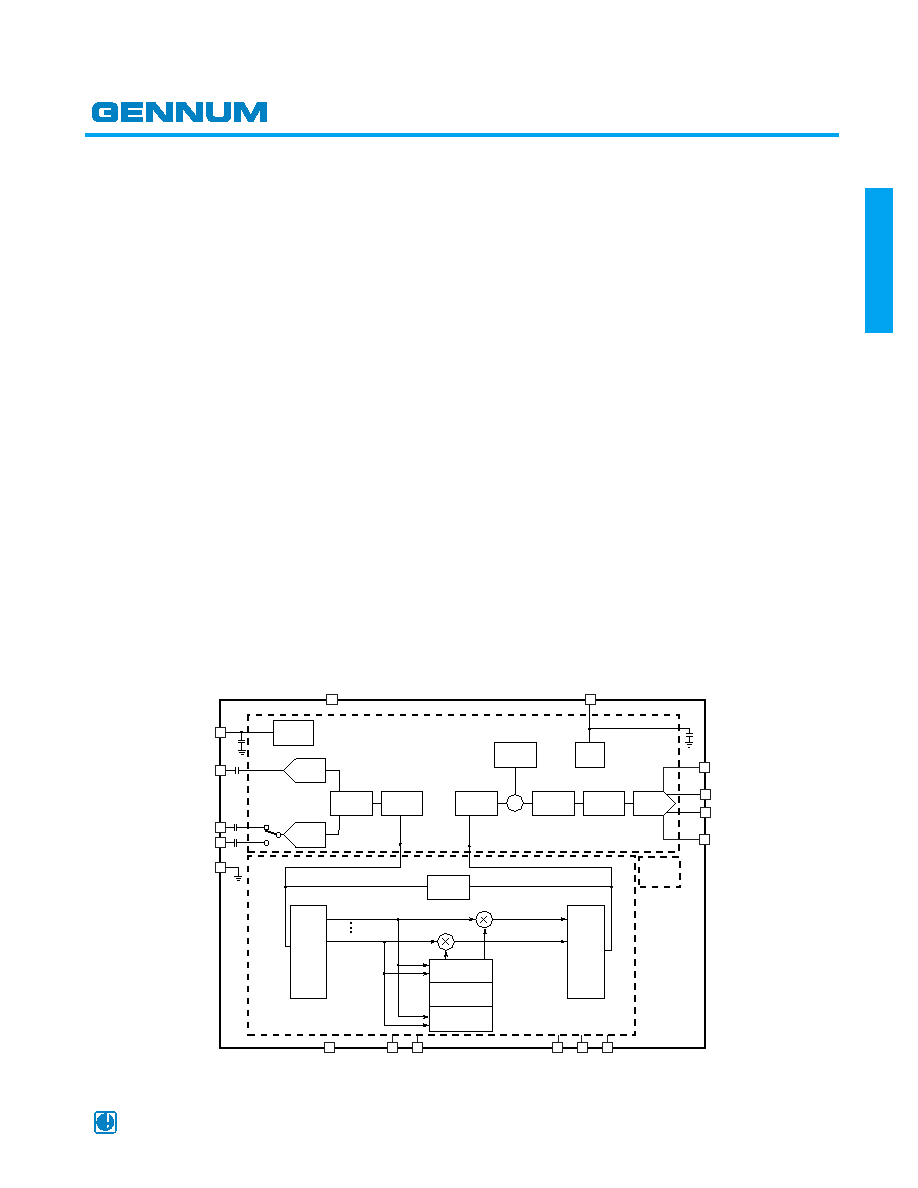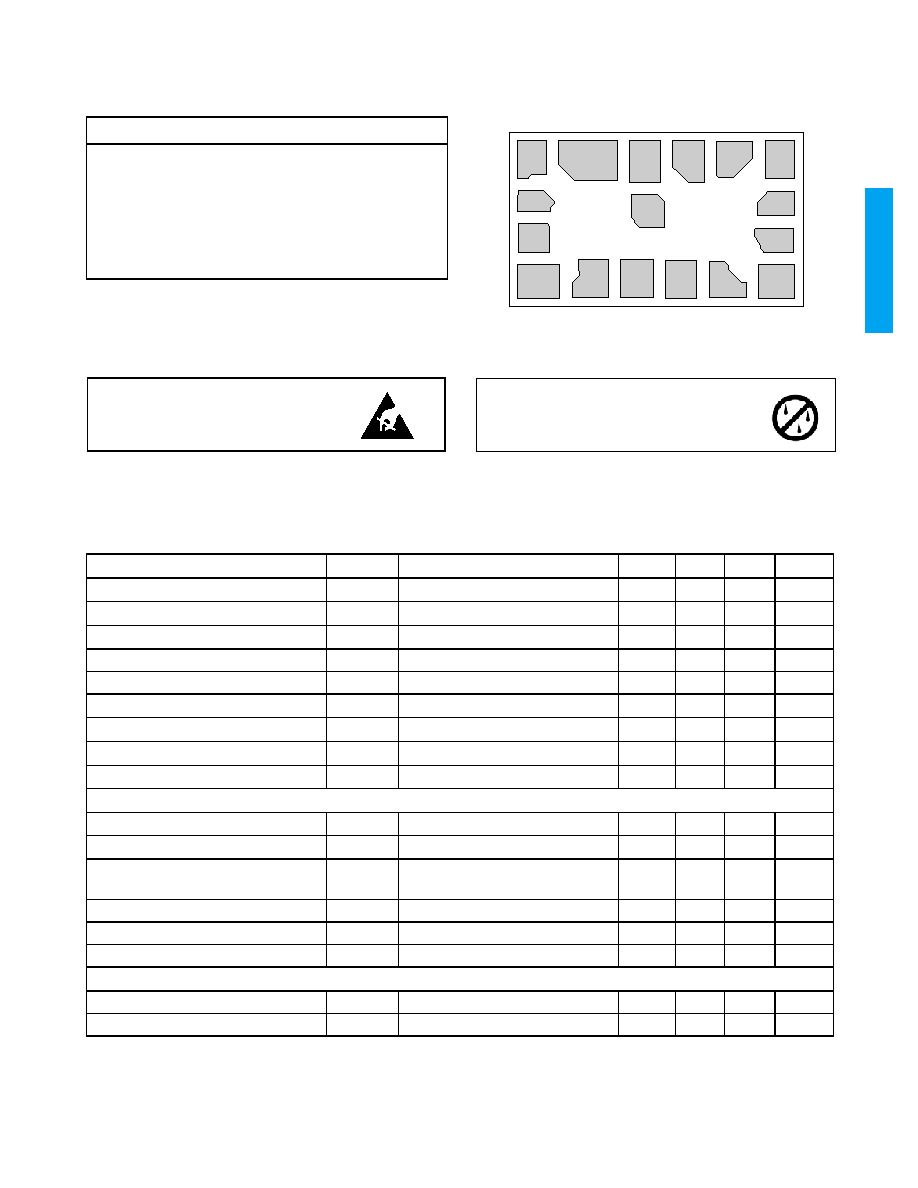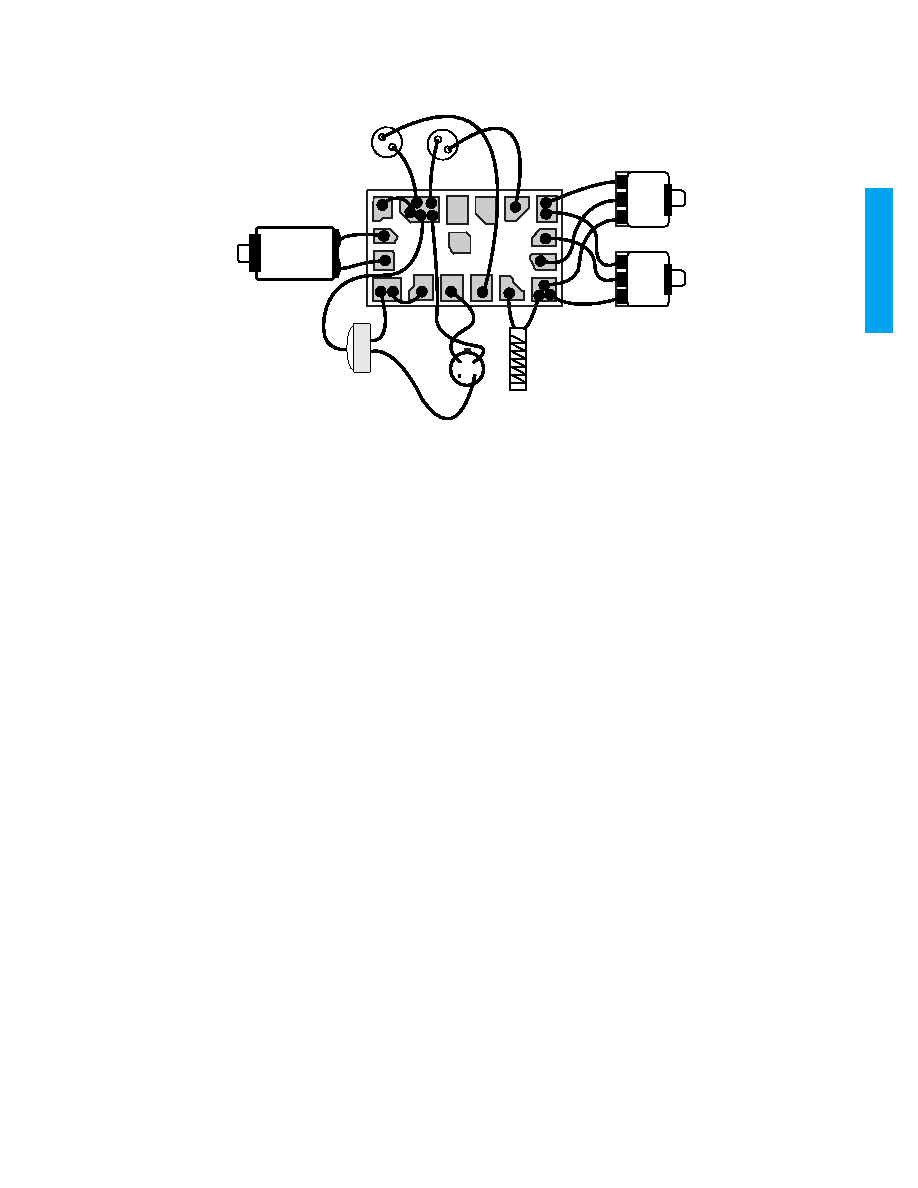 | –≠–ª–µ–∫—Ç—Ä–æ–Ω–Ω—ã–π –∫–æ–º–ø–æ–Ω–µ–Ω—Ç: GB3212 | –°–∫–∞—á–∞—Ç—å:  PDF PDF  ZIP ZIP |

Doc.No. 20352 - 2 [Rev. July 2004]
GB3212 PRELIMINARY DATA SHEET
1 of 10
G
B
321
2
FEATURES
∑ 4-channel WDRC compression
∑ 16-band frequency shaping
∑ 16-band adaptive noise reduction
∑ adaptive feedback cancellation
∑ F
RONT
W
AVE
Æ
directional processing
∑ high fidelity CODEC ≠ dual A/D's;D/A
∑ 16-bit DSP core processor
∑ 95dB input dynamic range with HRXTM Headroom
Extension
∑ drives zero-bias 2-terminal receivers
∑ thinSTAXTM packaging
∑ 4 fully configurable memories with audible memory
change indicator
∑ 2 memory select pads
∑ internal/external volume control
∑ AGCo with variable threshold and time constants
thin
STAXTM PACKAGING
Hybrid typical dimensions:
0.217 x 0.129 x 0.087in.
(5.51 x 3.28 x 2.21mm)
DESCRIPTION
DUETTM DIGITAL is a high end DSP system with advanced
adaptive algorithms. The signal processing algorithms run
on a hardware platform which is a combination of a high-
fidelity CODEC and a general purpose DSP core.
Algorithms developed and optimized by Gennum, running
on this powerful platform, offer true speech processing. The
reflowable thinSTAXTM packaging enables easy integration
into a wide range of applications, from CIC to BTE.
As shown in the block diagram below, some of the audio
DSP functions are implemented in hardware as a part of our
high fidelity CODEC while other adaptive algorithms such
as Noise Reduction and Feedback Cancellation use the
DSP core. Pre-processing blocks include F
RONT
W
AVE
Æ
directional processing and programmable filters. Post-
processing blocks include tone generation, volume control,
AGCo and programmable filters.
The GB3212 hybrid code programmed into the EEPROM is
"40".
This data sheet is part of a set of documents available for
this product. Please refer to
Getting Started with DUETTM
DIGITAL
, Document #29231 for a list of other documents.
BLOCK DIAGRAM
GND
SDA
MS2
N/A
N/A
MS1
FMIC
MGND
VREG
RMIC
T
OUT-
PGND
OUT+
VBP
VC
A/D
REGULATOR
CODEC
DSP
A/D
A/D
D/A
HBRIDGE
50n
60n
70n
70n
VC
VB
5
14
15
16
2
1
10n
EEPROM
FRONTWAVE
BIQUAD
FILTERS
AGC-O
BIQUAD
FILTERS
Frequency Shaping
16 bands
Noise Reduction
16 bands
TONE
GENERATOR
Frequency
Band
Analysis
Frequency
Band
Synthesis
band 1
band 16
WDRC
4 channels
Adaptive
Feedback
Cancellation
10
13
11
12
4
6
3
8
7
9
17
BIQUAD
FILTERS
DUETTM DIGITAL
Advanced DSP System
with F
RONTWAVE
Æ

GENNUM CORPORATION
20352 - 2
2 of 10
G
B
321
2
ABSOLUTE MAXIMUM RATINGS
PAD CONNECTION
PARAMETER
VALUE/UNITS
Operating Temperature Range
-10∞C to 40∞C
Storage Temperature Range
-20∞C to 70∞C
Absolute Maximum Power Dissipation
25mW
Maximum Operating Supply Voltage
1.5VDC
Absolute Maximum Supply Voltage
2VDC
CAUTION
ELECTROSTATIC
SENSITIVE DEVICES
DO NOT OPEN PACKAGES OR HANDLE
EXCEPT AT A STATIC-FREE WORKSTATION
VREG
N/A
N/A
MS2
GND
PGND
OUT+
9
10
11
17
12
13
14
15
16
1
2
3
4
5
6
7
8
OUT-
VBP
VB
SDA
MS1
VC
T
MGND
FMIC
RMIC
CAUTION
LEVEL 3 MOISTURE
SENSITIVE DEVICES
DO NOT OPEN PACKAGES EXCEPT UNDER
CONTROLLED CONDITIONS
ELECTRICAL CHARACTERISTICS
Conditions: Supply Voltage V
B
= 1.3V; Temperature = 25∞C
PARAMETER
SYMBOL
CONDITIONS
MIN
TYP
MAX
UNITS
Hybrid Current
AMP
All adaptive features enabled.
-
1.1
-
mA
Minimum Operating Supply Voltage
V
BOFF
Ramp down
0.94
0.97
1.0
V
Supply Voltage Turn On Threshold
V
BON
Ramp up
-
1.10
-
V
Low Frequency System Bandwidth
-
125
-
Hz
High Frequency System Bandwidth
-
8
-
kHz
Converter Gain
A
CONV
A/D + D/A gain.
-
29
-
dB
Total Harmonic Distortion
THD
V
IN
= -40 dBV
-
-
1
%
THD at Maximum Input
THD
M
V
IN
= -15 dBV, HRX - ON
-
-
3
%
Clock Frequency
clk
1.945
2.048
2.15
MHz
INPUT
Input Referred Noise
IRN
Bandwidth 100Hz - 8kHz
-
-
-106
dBV
Input Impedance
Z
IN
-
16
-
k
Anti-alias Filter Rejection
(input referred)
=
clk
-8kHz, V
IN
= -40dBV
-
80
-
dB
Maximum Input Level
-
-15
-
dBV
Input Dynamic Range
HRX - ON, Bandwidth 100Hz - 8kHz
-
95
-
dB
A/D Dynamic Range
Bandwidth 100Hz - 8kHz
-
86
-
dB
OUTPUT
Maximum RMS Output Voltage
0dBFS = 1kHz
-
-1
-
dBV
D/A Dynamic Range
Bandwidth 100Hz - 8kHz
-
83
-
dB

GENNUM CORPORATION
20352 - 2
3 of 10
G
B
321
2
SUPPORT SOFTWARE
All support software for the GB3212 is available from the
Gennum Web site,
http://www.gennum.com/hip/software/index.html
.
ELECTRICAL CHARACTERISTICS
(CONTINUED)
Conditions: Supply Voltage V
B
= 1.3V; Temperature = 25∞C
PARAMETER
RANGE
UNITS
MIN
MAX
FRONTWAVE
Æ
Time Delay
0.1
50
ms
Low Frequency Equalizer Corner Frequency
0.05
8
kHz
FREQUENCY SHAPING
Pre1 and Pre2 Biquad Filter
Design Specific
N/A
PostA and PostB Biquad Filter
Design Specific
N/A
Graphic EQ Band Gain
-42
0
dB
WIDE DYNAMIC RANGE COMPRESSION
Lower Threshold
-100
-30
dBFS
Upper Threshold
-90
-20
dBFS
Low Level Gain
-18
42
dB
High Level Gain
-18
42
dB
Compression Ratio
1:1
100:1
Ratio
Fast Detector Time Constant
4
8188
ms
Slow Detector Time Constant
4
8188
ms
AGCo
AGCo Output Limiting
-40
0
dBFS*
AGCo Compression Ratio
: 1
Ratio
AGCo Attack Time Constant
0.25
8192
ms
AGCo Release Time Constant
0.25
8192
ms
WIDEBAND SYSTEM GAIN
Wideband System Gain
-36
12
dB
External Volume Control
-48
0
dB
Internal Volume Control Attenuator
-48
0
dB
* peak output is defined as largest sine wave possible at the resonant frequency of the receiver

GENNUM CORPORATION
20352 - 2
4 of 10
G
B
321
2
Figure 1: Test circuit
Figure 2: Typical application circuit
VC
A/D
REGULATOR
CODEC
DSP
A/D
A/D
D/A
HBRIDGE
50n
60n
70n
70n
5
14
15
16
2
1
10n
EEPROM
FRONTWAVE
BIQUAD
FILTERS
AGC-O
BIQUAD
FILTERS
Frequency Shaping
16 bands
Noise Reduction
16 bands
TONE
GENERATOR
Frequency
Band
Analysis
Frequency
Band
Synthesis
band 1
band 16
WDRC
4 channels
Adaptive
Feedback
Cancellation
10
13
11
12
4
6
3
8
7
9
17
VB
3k9
3k9
1k
200k
All resistors in ohms, all capacitors in farads unless otherwise stated.
LP FILTER
OUT
BIQUAD
FILTERS
VC
A/D
REGULATOR
CODEC
DSP
A/D
A/D
D/A
HBRIDGE
50n
60n
70n
70n
5
14
15
16
2
1
10n
EEPROM
FRONTWAVE
BIQUAD
FILTERS
AGC-O
BIQUAD
FILTERS
Frequency Shaping
16 bands
Noise Reduction
16 bands
TONE
GENERATOR
Frequency
Band
Analysis
Frequency
Band
Synthesis
band 1
band 16
WDRC
4 channels
Adaptive
Feedback
Cancellation
10
13
11
12
4
6
3
8
7
9
17
VB
All resistors in ohms, all capacitors in farads unless otherwise stated.
BIQUAD
FILTERS
Knowles or Microtronic
zero-bias receiver

GENNUM CORPORATION
20352 - 2
5 of 10
G
B
321
2
Figure 3: Assembly diagram
INTRODUCTION
The GB3212 hybrid comprises a highly versatile, advanced
digital signal processing system.
Configuration data stored in non-volatile memory defines
hearing aid parameters. This data needs to be uploaded to
the hybrid before the circuit becomes functional. The
GB3212 hybrid is programmed via the SDA pin using
industry-standard programming boxes.
Configuration data is generated by an ARK product
component library (DLL). Like Gennum's other digital
products, the GB3212 is fully supported by Gennum's
software tools available from the Gennum ARK web site
http://ark.gennum.com
.
SIGNAL PATH
There are two main audio input signal paths. The first path
contains the Front Microphone and second path contains
the Rear Microphone or Telecoil input as selected by a
programmable MUX. The front microphone input is
intended as the main Microphone audio input for single
microphone applications. In FRONTWAVEÆ operation, a
multimicrophone signal is used to produce a directional
hearing instrument response. The two audio inputs are
buffered, sampled and converted into digital form using
dual A/D converters. The digital outputs are converted into
a 32kHz, 20-bit digital audio signal.
Further IIR filter blocks process the front microphone and
rear microphone signals. Two biquad filters, "miccomp1"
and "miccomp2", are used to match the rear microphone's
gain and phase to that of the front microphone. After the
miccomp filters, more filters are used to provide an
adjustable group delay to create the desired polar response
pattern during the calibration process.
In the Telecoil mode gains are trimmed during Cal/Config
process to compensate for microphone/telecoil
mismatches.
The FRONTWAVEÆ block is followed by two cascaded
biquad filters, "pre1" and "pre2". These filters can be used
for frequency response shaping before the signal goes from
the CODEC chip into the DSP chip. When FRONTWAVEÆ is
not enabled, the miccomp filters can be used for frequency
response shaping also.
After passing through the biquad filters the signal enters the
DSP chip. At this point, the signal is converted to 16kHz
and 16-bit. The DSP chip runs the following signal
processing algorithms:
∑
frequency analysis
∑
4 channel WDRC
∑
16 band frequency shaping
∑
16 band noise reduction
∑
frequency band synthesis
∑
adaptive feedback cancellation
MS
switch
(N.O.)
Zero Biased
Receiver
+
-
CS44
T-coil
Rear
Mic
+
Front
Mic
+
VC




